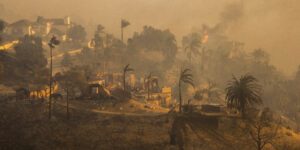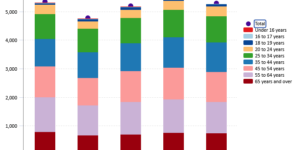Reports surfaced from several media outlets last week suggesting that the special structure of coconut walls could help unlock the key to building property that can withstand earthquakes and other natural disasters.
The media announcement published by the Press Trust of India, Science Daily and Eureka Alert news service (among others) notes that coconuts fall unscathed from palm trees some 30 meters high. To protect the internal seed when the coconut hits the ground, the coconut has a complex structure of three layers: the outer brown, leathery exocarp; a fibrous mesocarp; and a tough inner endocarp surrounding the pulp which contains the developing seedling, researchers at the Plant Biomechanics Group of the University of Freiburg note.
As part of a larger project on “Biological Design and Integrative Structures,” these researchers have been working with civil engineers and material scientists to investigate how a coconut’s specialized structure could be applied in architecture.
The researchers used compression machines and an impact pendulum to investigate how coconuts disperse energy. “By analyzing the fracture behavior of the samples and combining this with knowledge about the shell’s anatomy gained from microscopy and computed tomography, we aimed to identify mechanically relevant structures for energy absorption,” Biomechanist Stefanie Schmier said in a press statement.
Their investigations found that within the endocarp layer—which consists mainly of highly lignified (wood-like) cells—the vessels that make up the vascular system have a distinct, ladder-like design, which is thought to help withstand bending forces. Each cell is surrounded by several lignified rings, joined together by parallel bridges.
“The endocarp seems to dissipate energy via crack deflection” said Schmier. “This means that any newly developed cracks created by the impact don’t run directly through the hard shell,” she said.
It is thought that the angle of the vascular bundles helps to “divert” the trajectory of the cracks. The longer a crack has to travel within the endocarp, the more likely it is that it will stop before it reaches the other side.
The distinct angle of the vascular bundles in the endocarp could be applied to the arrangement of textile fibers within functionally graded concrete to enable crack deflection, researchers believe.
“This combination of lightweight structuring with high-energy dissipation capacity is of increasing interest to protect buildings against earthquakes, rock fall and other natural or [manmade] hazards,” said Schmier.





















 Study: Widening Gap Between Cyber Attack Causes, Public Perception
Study: Widening Gap Between Cyber Attack Causes, Public Perception  2025 Underwriting Profit and ‘Shop-a-Palooza’ Predicted for Auto Insurance
2025 Underwriting Profit and ‘Shop-a-Palooza’ Predicted for Auto Insurance  Mixed Bag: What Trump 2.0 Tariffs, DOGE Activities Mean For Insurers
Mixed Bag: What Trump 2.0 Tariffs, DOGE Activities Mean For Insurers  Property and Casualty Insurance Trends for 2025
Property and Casualty Insurance Trends for 2025 